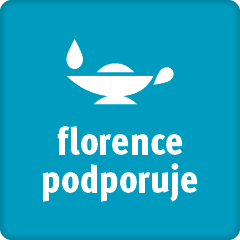


Číslo 10 / 2014
Osteoporosis

Osteoporosis, defined by WHO as a decrease in bone density, is a very common disease. It affects mainly women after menopause (the prevalence in 55 year-old women is 7%, in 80 year-old women 19%). It is a pathological decrease of bone tissue – atrophy of bone trabeculae. The bones lose calcium, which results in the reduction of bone density. The bone loses its strength and is more prone to fracture. Osteoporosis is a disease that often develops unobserved until complications appear. Osteoporosis can be classified as primary (without an evident concrete cause) and secondary.
Patient: Good morning, doctor. My name is Hunt and my mother, Ms Stiller, was taken to this hospital yesterday with a forearm fracture. It's been the third fracture this year, so I came to ask how she is doing and if it is normal at her age.
Doctor: Good morning, Ms Hunt. She was given an X-ray and had her arm put in a cast. Given her age, 75, and a few small complications, she should stay here for a few more days. However, your mother suffers from osteoporosis, and that is why her bones break so often.
Patient: Osteoporosis? What is it?
Doctor: To put it simply, it is the thinning of bone tissue. The bone becomes porous, it loses calcium and other minerals, which leads to higher fragility, among other things.
Patient: And what are the manifestations?
Doctor: Mild forms are asymptomatic. Later, the symptoms include back pain as osteoporosis affects mainly vertebrae, fractures and a decrease in height or skeletal deformation caused by the change of the shape of vertebrae.
Patient: Is it possible to cure it?
Doctor: It is easier to prevent osteoporosis than to cure it. However, we are going to medicate your mother with drugs to prevent loss of bone mass and to help bone formation – calcium, fluorine, vitamin D, bisphosphonates and hormones, and set regime measures in the form of a calcium-rich diet and adequate physical activity. These measures are to be continued when she gets back home.
Patient: Ok. And when is she going to be discharged?
Doctor: I suppose within a few days. We will let you know via telephone.
Patient: Thank you very much. See you soon.
Doctor: See you.
| decrease | úbytek, pokles, snížení |
| to result | mít za následek, vést k čemu |
| prone to | náchylný k čemu, mít sklon, tendenci |
| unobserved | nepozorovaný |
| evident | očividný, zřejmý, patrný, evidentní, zjevný |
| cause | příčina, důvod |
| forearm | předloktí |
| cast | sádra; model, odlitek |
| given | vzhledem k; daný, uvedený |
| to suffer from | trpět čím, být postižen |
| to put it simply | zjednodušeně řečeno |
| to lead to | vést k čemu, mít za výsledek |
| fragility | lomivost; křehkost |
| among other things | mimo jiné |
| manifestation | projev |
| to discharge | propustit |
| to suppose | předpokládat, myslet si, domnívat se |
| via | prostřednictvím, přes |
Lekce angličtiny pro časopis Florence připravuje překladatelská agentura ACP TRADUCTERA (www.traductera.com).
Ilustrační foto – zdroj: www.webmd.com
Další články v tomto čísle
- Zestárnout není umění – umění je vyrovnat se s tím
- Stačí sestře středoškolské vzdělání i dnes?
- Diabetes a obezita, režimová opatření
- Udělejte něco pro sebe a přijďte na Den zdraví
- Vítejte v Domově U Anežky
- Inkontinenční pomůcky v ošetřovatelské péči
- Péče o geriatrického pacienta na chirurgické jednotce intenzivní péče
- Základy komunikace s lidmi se sluchovým postižením ve zdravotnickém zařízení
- Peadiatric Basic and Advanced Life Support
- Špecifické terapeutické prístupy v psychiatrickej ošetrovateľskej praxi





















